Media | Articles
Review: 2021 Honda Ridgeline AWD Sport
High school is full of people expending large amounts of energy to let people know who they are. Whether it’s jocks in jerseys on Friday, thespians in makeup eleven hours before backstage call, or valedictorians in tears over a 98, most people spend their teenage years in a constant state of projection.
Like so much of high school, however, little of this matters after graduation. The theater kids learn to act like themselves. The valedictorians either burn out or settle into sustainable pace. The jocks grow slower and more well-rounded. In hindsight, it’s easy to see what was admirable and rare in my hometown halls: quiet self-assurance.
In an age where most trucks shout T-R-U-C-K until they’re blue in the face, the Honda Ridgeline’s assurance is noteworthy—this is the soft-spoken classmate who spent four years keeping it between the mayo and the mustard. The first generation of Honda’s unibody-with-a-bed hit the market in 2006, and it’s been the butt of truck-guy jokes ever since, with the shape of a half-ton pickup but the capabilities of a midsize SUV. Yet someone has been paying attention: consider Ford’s recently launched compact pickup, the Maverick, and Hyundai’s new, don’t-call-it-a-truck Santa Cruz: Both are scaled-down riffs on the Ridgeline formula, with unibody construction, an integrated bed, and a roomy interior. Each feels more like a crossover than a conventional pickup truck, and the market has met those models with a fury of excitement.
For 2021, the Ridgeline Sport AWD marks the lowest rung on the Honda’s ladder. Above it are the more expensive RTL, RTL-E, and Black Edition trims. The price is commensurately modest; for $37,665, our tester brought niceties like remote start, three-zone climate control, and adaptive cruise control, along with traditional Ridgeline party tricks—a dual-action tailgate and a spacious, drainable in-bed trunk. Options were limited to Platinum White paint ($395) and the Honda Performance Development Package ($2800), the latter of which tacks on fender flares, 18-inch gold alloys, bed decals, and a tailgate HPD badge.
The Ridgeline’s nose was restyled for 2021, bringing a bolder, more upright front end. This change puts the truck visually in line with square-rigged competitors like the Toyota Tacoma and the Nissan Frontier, but it also creates more distinction from the Ridgeline’s platform-mate, Honda’s own Pilot SUV. (Fun fact: This component set is also shared with the Odyssey minivan.) While the face-lift is pleasant enough, it lightly undermines the Ridgeline’s traditional sense of quiet self-confidence.
Marketplace
Buy and sell classics with confidence
Ditto the HPD bits. Gaudy wheels and loud graphics are common on trucks, whether from manufacturer package or the aftermarket, but here, it fells like trying to fall in line with the cool kids. We’d put the surplus coin elsewhere, like jumping up a trim to the $40,000 RTL, which brings standard heated seats. The Sport’s cloth chairs aren’t offensive, but a trademark Northern Michigan cold snap during our test period had us pining for butt-toasters.
Elsewhere in the cabin, heaps of dark textured plastic do their best to ward off a fleet-spec feel, with varying degrees of success. More impressive are the subtle layout choices. Rather than opt to integrate elbow padding into a taller center console like the competition, for example, the Ridgeline features a low center console, still quite spacious, plus a pair of folding armrests. The cabin feels airier because of this, and useful storage slots in each of the front doors mean you’re never without a soft spot for the trappings of travel.
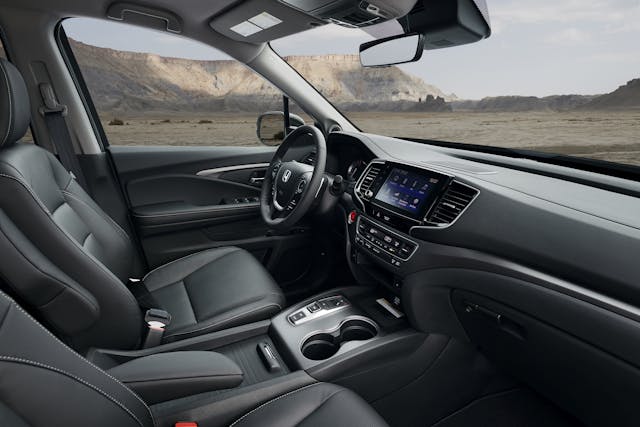
Only one engine is available here, Honda’s J35 3.5-liter V-6. It’s serviceable and refined, sending 280 hp and 262 lb-ft of torque to the truck’s transversely mounted nine-speed automatic. That automatic is paired to Honda’s i-VMT4 all-wheel drive, a front-biased layout that can shuffle up to 70 percent of torque to the rear wheels in a pinch—and then up to 100 percent of that torque to either rear wheel if necessary.
Honda’s Intelligent Traction Management (ITM) system adjusts driveline settings depending on wheelspin and driver input, and it’s commendably effective. Two days into our test, our test route gained a foot of snow in hours. ITM’s button-activated snow mode softened throttle inputs and shift points to keep torque spikes to a minimum, allowing the Ridgeline to scamper up steep and slick hills with ease. Sand mode, another button press away, slackened the traction control and allowed for deep-snow shenanigans at speed.
The virtues of the Ridgeline’s unibody construction and independent rear suspension shine well on long hauls. The Chevy Colorado and Ford Ranger are similar in size but less comfortable over long days in the saddle. Wind noise is still a mild annoyance, but it’s nothing the Sport’s modest seven-speaker stereo can’t outshout. Blessedly, the Ridgeline also wears a genuine rotary volume knob, not a plus-minus button or touch slider. (Honda rightfully caved on the asinine idea of using a touchscreen for all cabin features a few years back.) The system is rather slow to boot up, especially in the cold, and while the standard UI is acceptable, as in so many other vehicles, you’re still going to be happier running Apple CarPlay or Android Auto. Both are standard on all Ridgeline trims.
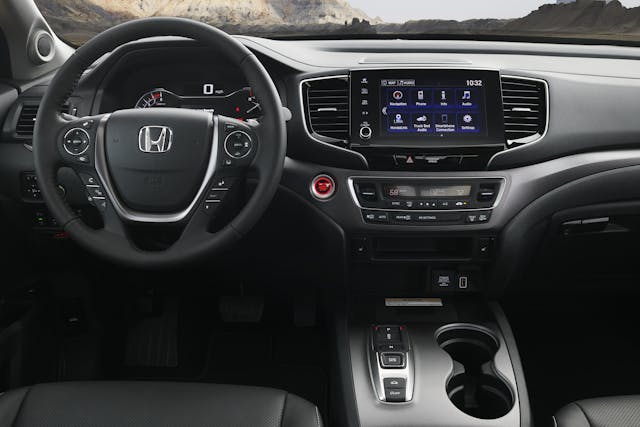
The Ridgeline’s central infotainment system isn’t a standout, but the climate system’s physical buttons—a rarity these days—work well with gloved hands.When I needed the Honda to make like a truck and haul, it did so without complaint. That blizzard caught me off guard, but I was still able to drag a few hundred pounds of bulky snow machinery out of the barn and load it into the truck’s 64-inch bed with relative ease. As we’ve noted in our test of an earlier Ridgeline, the bed’s load floor can seem a tad high, but it’s not unmanageable, and the height isn’t out of the ordinary for full-size pickups.
Still, with the Maverick and the Santa Cruz joining the unibody-pickup club, the Ridgeline’s purpose and appeal are growing murky. This form factor and skill set now seem best in slightly smaller size; the Honda is some 10.5 inches longer and six inches wider than the Maverick, with 4.1 more inches of wheelbase, but surprisingly, the two models squeeze out almost the same bed volume: 33.9 cubic feet for the Ridgeline versus 33.3 for the Maverick. (This discounts the Honda’s 7.3-cubic-foot bed trunk, but it’s worth noting that this trunk is impossible to open when the bed is full.)
The Maverick went on sale in summer of last year, selling 13,258 units by New Year’s Eve. The Ridgeline sold almost four times that in the whole of 2021, but the Honda’s sales are effectively plateaued, and the Ford is just getting started. The class newcomers are an indication that there’s a sizable group of buyers who only haul occasionally, and that those people are confident enough to be honest about that use. We’d recommend the Honda to them, but we wouldn’t be surprised if they wind up in a Hyundai or a Ford. Those folks have always been confident enough to do their own thing.
***
2021 Honda Ridgeline AWD Sport
Price: $37,665/$40,860 (base/as-tested)
Highs: Long-haul cabin, good ride quality, thoughtful packaging. The satisfaction of knowing you’re driving the OG that birthed a segment.
Lows: Ho-hum interior tech. Fuel economy is more in line with “truckier” body-on-framers like the Ford Ranger and Toyota Tacoma. Scale and price seem misaligned with the form factor’s current sweet spot.
Summary: Still a solid choice for those who want a truck without the live-axle, Big-Three drawbacks. But the newcomers are nipping at its heels.


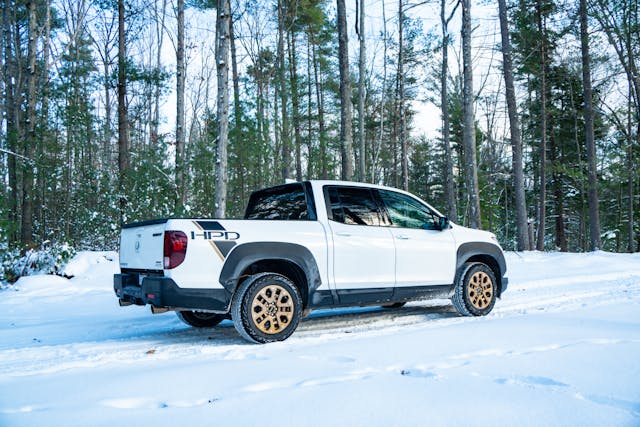

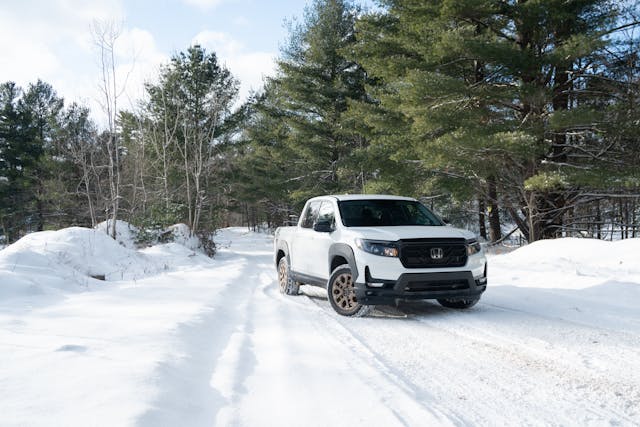
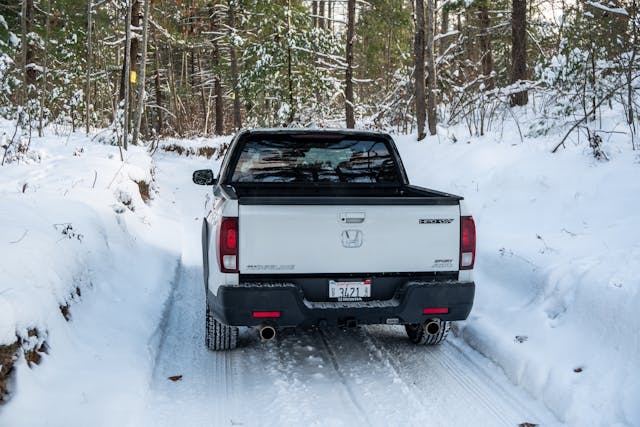
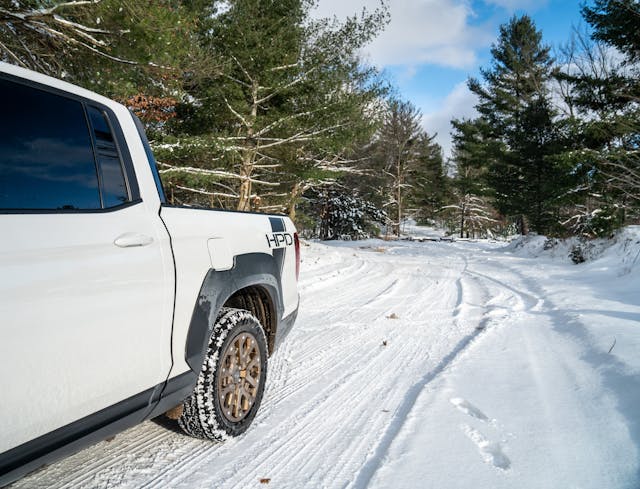










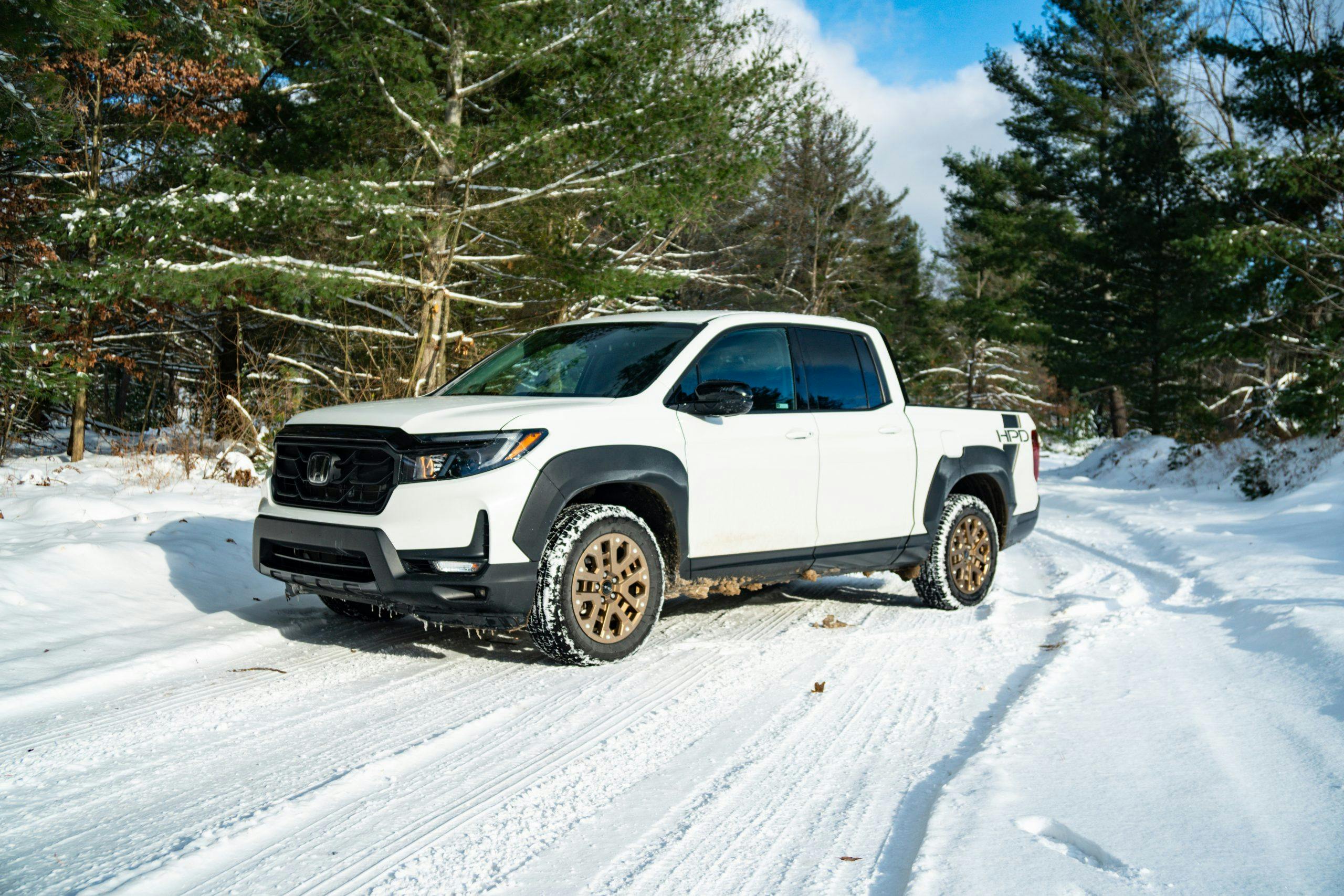
Looks like an f150 but mostly build 100% better